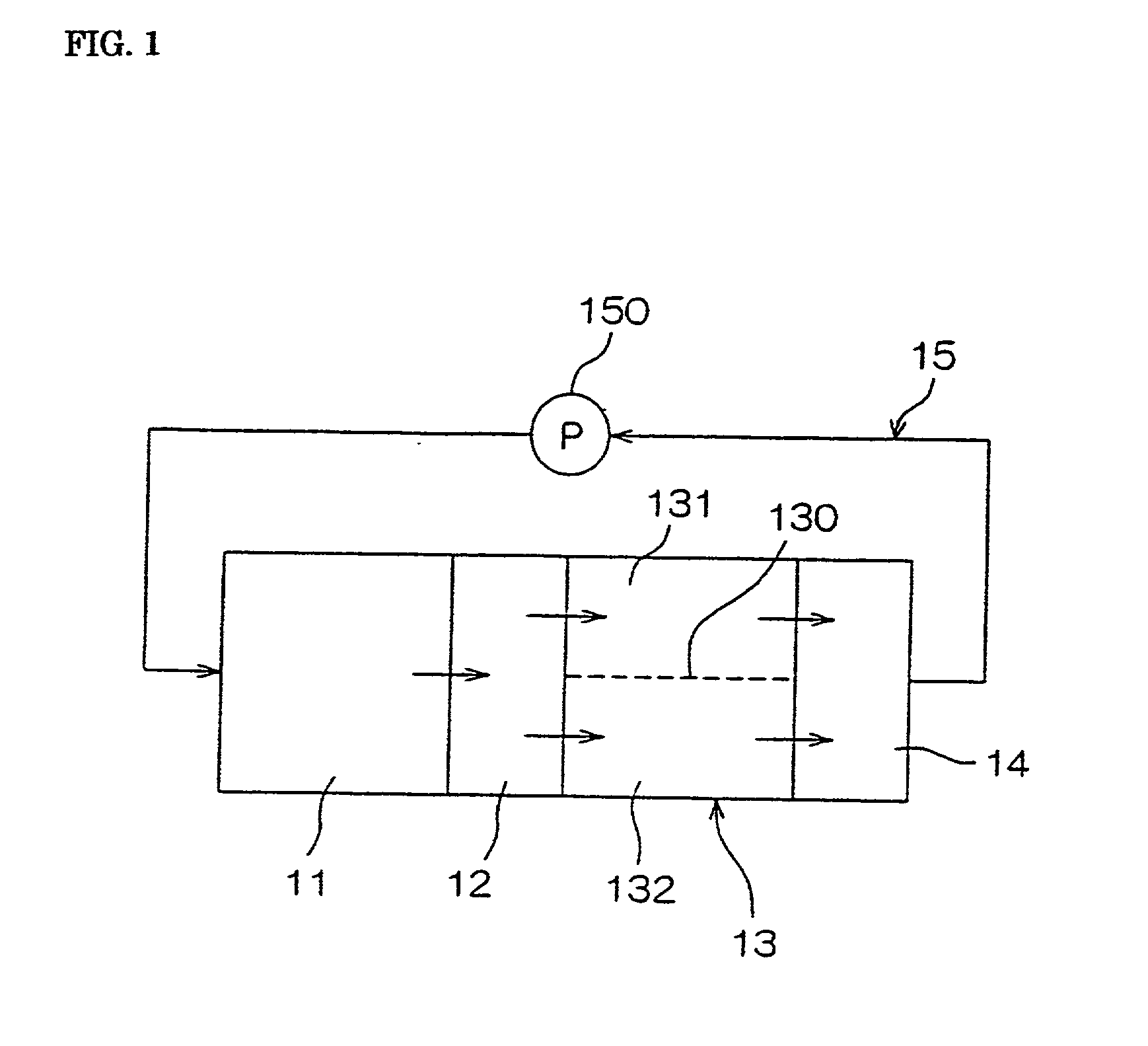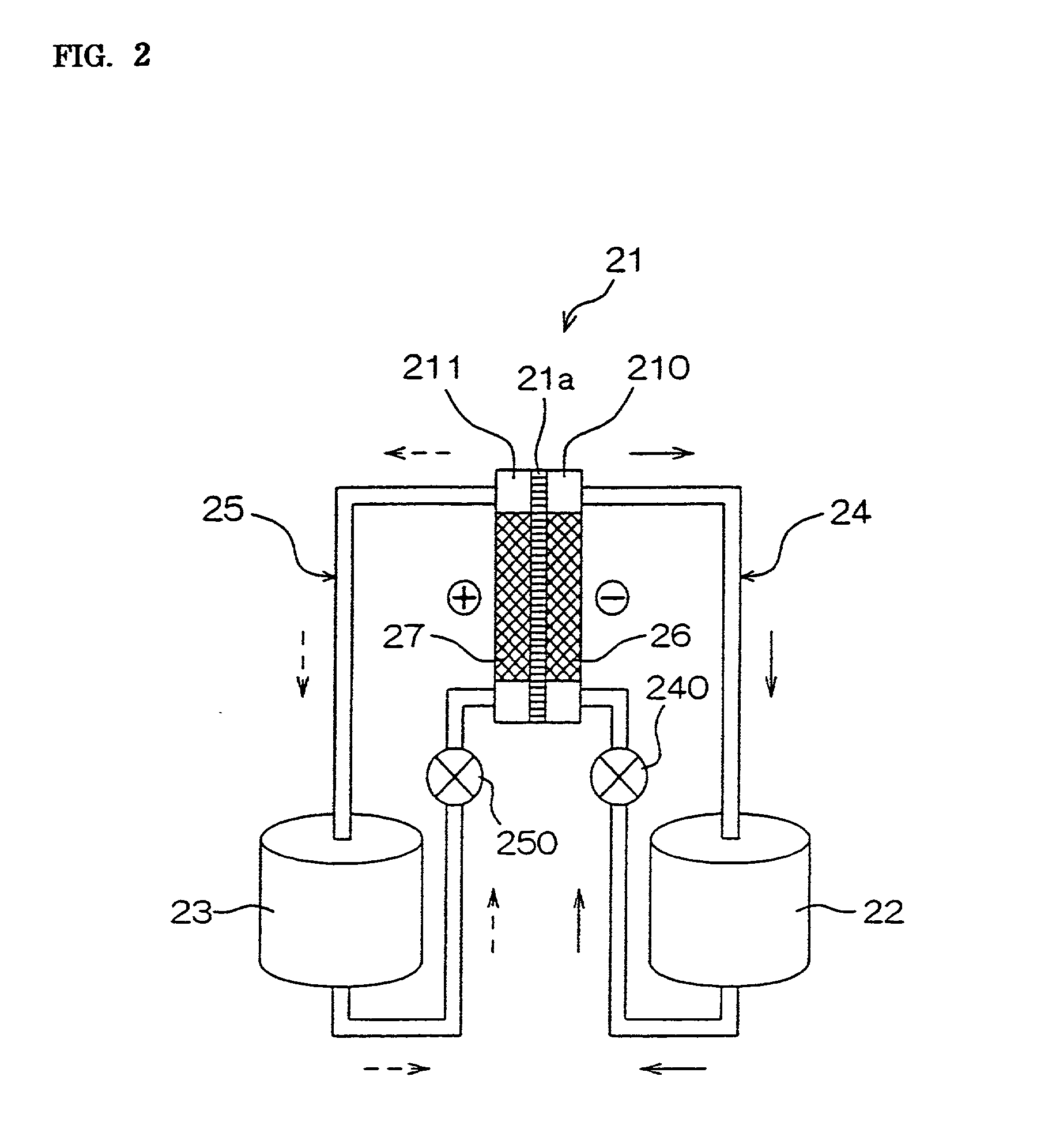Plating method and plating bath precursor used therefor
- Summary
- Abstract
- Description
- Claims
- Application Information
AI Technical Summary
Benefits of technology
Problems solved by technology
Method used
Image
Examples
example 1
[0135] (Activation Process)
[0136] Hydrochloric acid was added to the nickel plating bath precursor of the abovementioned composition 1 to be adjusted in pH to 1, and then, 1 liter of the bath precursor was poured into each cathode chamber and anode chamber divided by the partition film in the preparation tank for activation, and activation processing was carried out by supplying the electrical current under the following conditions:
[0137] Cathode: Platinum-coated titanium plate
[0138] Anode: Platinum-coated titanium plate Current density at the cathode: 15A / dm.sup.2
[0139] Processing time: 2 hours
[0140] Bath temperature: 25.degree. C.
[0141] (Plating Process)
[0142] 2 liters in total of the plating bath processed by the abovementioned activation process in cathode and anode chambers were poured into the plating tank, and added with ammonia to be adjusted in pH to 8.
[0143] Thereafter, while maintaining the dipping temperature at 40.degree. C., an ABS resin plate which was treated with pa...
example 3
[0146] The nickel plating bath of the abovementioned composition 2 was prepared, poured in a beaker, left for an entire day and night, and then 2 liters of the bath were poured into the plating tank, into which an ABS resin plate treated with palladium catalysis was dipped for 10 minutes while maintaining the dipping temperature at 40.degree. C. However, a nickel plated layer was not formed on the surface, and it was confirmed that the plating bath had lost activity.
[0147] Therefore, hydrochloric acid to be adjusted in pH to 1 was added to this plating bath, and then 1 liter of the bath was poured into each cathode chamber and anode chamber which were divided by the partition film in the preparation tank for activation, and applied with activation processing under the same conditions as in the above Example 1.
[0148] And, when 2 liters in total of the processed plating baths in the cathode and anode chambers were poured into the plating tank and mixed, added with ammonia to be adjust...
example 4
[0149] The plating bath which was applied with nickel plating processing in the above Example 1 was recovered, and added with hydrochloric acid to be adjusted in pH to 1. Then, 1 liter of the bath was poured into each cathode chamber and anode chamber divided by the partition film in the preparation tank for activation again, and activated under the same conditions as in the above Example 1. However, in this case, a nickel electrode plate was used as the anode.
[0150] Then, when 2 liters in total of the plating baths in the cathode and anode chambers were poured into the plating tank, adjusted in pH to 8 with the addition of ammonia, and an ABS resin plate treated with palladium catalysis was dipped in the bath for 10 minutes while maintaining the dipping temperature at 40.degree. C., it was confirmed that a nickel plated layer with a thickness of approximately 0.6 .mu.m was formed.
[0151] Also, when the plating bath after being applied with nickel plating processing in the above Exam...
PUM
| Property | Measurement | Unit |
|---|---|---|
| Length | aaaaa | aaaaa |
| Dissociation constant | aaaaa | aaaaa |
| Fraction | aaaaa | aaaaa |
Abstract
Description
Claims
Application Information
 Login to View More
Login to View More - R&D
- Intellectual Property
- Life Sciences
- Materials
- Tech Scout
- Unparalleled Data Quality
- Higher Quality Content
- 60% Fewer Hallucinations
Browse by: Latest US Patents, China's latest patents, Technical Efficacy Thesaurus, Application Domain, Technology Topic, Popular Technical Reports.
© 2025 PatSnap. All rights reserved.Legal|Privacy policy|Modern Slavery Act Transparency Statement|Sitemap|About US| Contact US: help@patsnap.com



